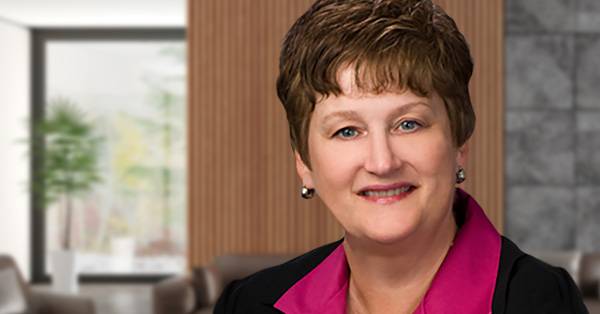- Solutions
- Solutions
- Home Health
- Hospice
- Life Plan Community
- Palliative Care
- Private Duty
- Senior Living
- Skilled Nursing
- Skilled Nursing
- Skilled Nursing Software
- Advanced Insights
- Customer relationship management
- Data and analytics
- Financial & operations management
- Marketing
- Nutrition management
- Referral management
- Regulatory compliance
- Retail management
- Resident engagement
- Revenue cycle management
- Skilled nursing interoperability
- Partners
- Blogs
- Resources
- About
- User Conference

Maximizing your EHR software: The key to better care
Nurses are often the unsung heroes of healthcare, shouldering many responsibilities from patient care to data management. In an age when technology can make or break operational success, EHR platforms promise to be the linchpin that holds the complex tapestry of healthcare together. However, many nursing staff need to maximize their EHR software.
The lack of utilizing this EHR software doesn’t just impact operational efficiency; it can also pose real risks. Gaps in use can cascade down, straining staff resources and affecting your bottom line. And the challenges are multi-faceted. From temporary or contract staff struggling with EHR software to poorly designed platforms that prove more hindrance than help, the journey to maximizing EHR effectiveness can be littered with roadblocks.
In this blog, you’ll learn about what’s happening in healthcare right now and the why behind the underutilization of EHR systems. You’ll also gain an understanding of the right EHR platform’s pivotal role in delivering high-quality resident care and operational excellence. We’ll take a closer look at the following:
The current trends: How EHRs are being used (or not)
Nurses are the backbone of any healthcare facility. They’re often the first and the last point of contact for residents, and they juggle many tasks and responsibilities. With the hectic pace of nursing, EHR software is a significant lifeline. However, despite the benefits, EHRs often become a box-ticking exercise for many nurses, thanks to unfamiliarity and poor training or being overwhelmed with workloads.
As 94% of healthcare providers report that EHRs make resident records more readily available, this underutilization should be corrected. Not only does it add to the risk of rehospitalization due to potential inaccuracies in medications or diagnoses, but it also impacts the ability to provide personalized, high-quality care to residents. All this can lead to a ripple effect that strains staff support, financial outcomes, and overall facility performance.
The challenges: Impacts to your staff and resident data
Ineffective use of EHR software can be a significant burden on nursing staff. Nurses are only supported when the system is user-friendly and has the tools to assist in everyday tasks. Rather than streamlining processes, poorly designed EHR systems can become another obstacle staff must navigate, adding stress and taking valuable time away from patient care.
25% of providers find their EHR isn’t helping them deliver better care. The limitations could range from insufficient features and poor usability to a lack of real-time data and interoperability. In an industry where every moment counts, a subpar EHR platform can lead to a lack of staff support and unfavorable outcomes in resident health and operational efficiency.
Temporary or contract staff needing more familiarity with EHR software is also a common concern. Their lack of expertise in navigating these systems affects workflow efficiency and could compromise the integrity of resident data and the quality of care provided.
The solution: An effective EHR solution to boost use
Choosing an EHR platform isn’t just about ticking off features on a list; it’s a pivotal decision that impacts the entire workflow of your nursing staff and the quality of care you provide residents. When nurses are equipped with an EHR platform designed with their needs in mind, the road to full utilization becomes more accessible.
1. Ease of use:
Nurses are busy professionals who need more time to grapple with complicated interfaces. The right EHR software should be intuitive, helping nurses adapt quickly and thus making the transition from traditional methods to a digital approach much smoother.
2. Robust training and staff support:
With the right EHR software, you can avoid higher rates of staff burnout and worsened resident outcomes associated with an underperforming platform. A solid training program and ongoing staff support are also essential. You want your team to feel confident and supported as they learn to navigate new software or new features added to the software.
3. Real-time data:
In healthcare, every second counts. EHR platforms that offer real-time data enable quicker and more accurate decision-making, reducing errors and lowering the risk of rehospitalization.
4. Specialized tools for specific care requirements:
Whether it’s wound tracking, incident tracking, or infection tracking, specialized features tailored to the needs of skilled nursing facilities and CCRCs make a difference. These tools enable nurses to offer comprehensive care, keeping them one step ahead in patient management.
5. Streamlining workflows:
The right EHR platform can integrate seamlessly with other systems, automating various tasks and reducing the administrative burden on nurses. There is more time to focus on patient care rather than being bogged down by administrative tasks.
6. Compliance and regulatory guidelines:
With ever-changing healthcare laws and regulations, choosing an EHR platform that will help keep your facility up-to-date and compliant is essential.
An EHR solution you can get more out of
For nurses to provide the best care possible, it’s imperative to maximize the capabilities of EHR systems to the fullest. With training and effective use of a robust platform, facilities can significantly reduce rehospitalization rates, improve resident care, and optimize overall performance.
MatrixCare understands the unique challenges and requirements of CCRCs. When partnering with us, you can take advantage of a purpose-built EHR solution that includes specialized tools, robust training programs, and intuitive software to help you maximize the use of your EHR to provide better resident care.
From quality metrics reporting to infection and wound tracking, our software is designed to meet the needs of CCRCs like yours. Contact us at 866.469.3766 or visit matrixcare.com/life-plan-community-software.
Request a demo today for a closer look at MatrixCare.
See what MatrixCare can do for you
MatrixCare
MatrixCare provides an extensive range of software solutions and services purpose-built for out-of-hospital care settings. As the multiyear winner of the Best in KLAS award for Long-Term Care Software and Home Health and Hospice EMR, MatrixCare is trusted by thousands of facility-based and home-based care organizations to improve provider efficiencies and promote a better quality of life for the people they serve. As an industry leader in interoperability, MatrixCare helps providers connect and collaborate across the care continuum to optimize outcomes and successfully manage risk in out-of-hospital care delivery.
MatrixCare is a wholly-owned subsidiary of ResMed (NYSE: RMD, ASX: RMD). To learn more, visit matrixcare.com and follow @MatrixCare on X
Related Posts




See MatrixCare in action
Start by having a call with one of our experts to see our platform in action.
MatrixCare offers industry-leading software solutions. Thousands of facility-based and home-based care organizations trust us to help them improve efficiency and provide exceptional care.
© 2025 MatrixCare is a registered trademark of MatrixCare. All rights reserved.




